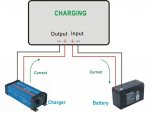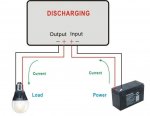The drain across the permanent feed
fuse in the
fuse box is 195ma, it turns out that 10ma is what is supposed to be the memory feed and 185ma, (unit switched off), is a drain on what should be the ignition feed through the radio. As there is no auxiliary key position or override on the radio, (like some more modern systems), the standard procedure was to cut the ignition feed into the radio and join the feed into the radio to the permanent memory feed; That way allowing the radio to be used when parked up. Never a very satisfactory way of wiring a radio in, ok with none memory push button radio systems or if the set didn't draw power when turned off, apart from minor memory (10ma) as you correctly stated. Unfortunately mine does draw this 185ma.
Incidentally it also turned out that the feeds in the Fiat wiring loom were reversed according to the German Radio Manufacture's ISO wiring layout, they point this out in their manual that some Manufacture's reverse the wire the radio plugs.
So looking at the issue again:idea-007: I will fit a delay timer relay with a trigger switch, the radio is now wired up to ignition only. When set up with timer in standby mode the timer draws 20ma, in working mode its 50ma, the timer I have ordered is adjustable but will be set for about 4hrs. After that time it will drop back to the 20ma and cut the radio out. Working it through the
battery monitor system would have drawn more power, the 185ma down to the set voltage, hours and hours, then 50ma to operate the cut off relay and monitor power till the
battery was flat. So on the radio side in stand by mode, I will in effect go from 195ma down to 30ma, that will make me

I had no intention of cutting everything off, I was just making the point that there are many other types of drains upon the batteries. At the moment I can't check it at the
battery as the front of MH is against a wall and the back just fits in the drive, I will do that another time to see what the other items are drawing, I hope not to much.
:have fun:


